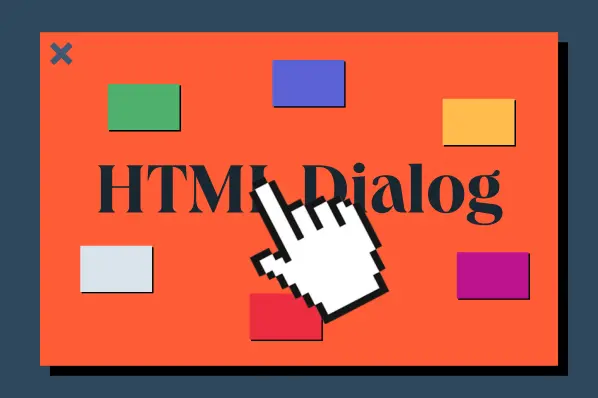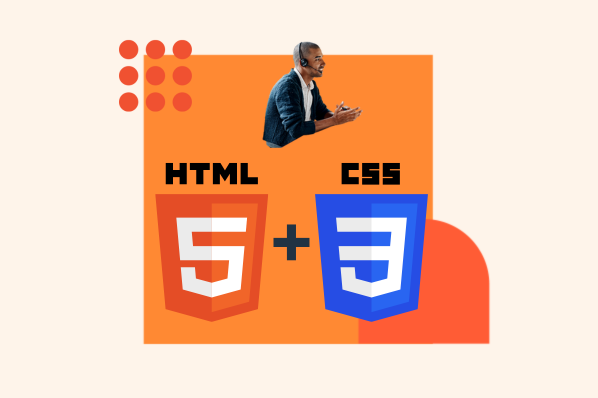I remember it like it was yesterday. Browsing the vast realms of the Internet, I stumbled upon a website that looked as if it were plucked straight out of the early 2000s. Neon colors, mismatched fonts, and, dare I say, a twinkling starry background. Aesthetics might be subjective, but this webpage had clearly missed a memo or two. We've all been there, right?

Enter the HTML style tag. Like a maestro orchestrating every instrument in a symphony, this tag is responsible for elevating a webpage from bland text to a work of art. It‘s not just about vanity either; it's about user experience, accessibility, and ensuring your audience feels at home. In this blog, we're going to embark on a journey to style like the pros. Ready?
Diving Deep into the HTML Style Tag
When I first dipped my toes into HTML, the <style> tag was like that treasure everyone talked about but hardly ever seen. At its core, the <style> tag in HTML is all about embedding those snazzy styles (like CSS) directly within your webpage. Think of it as giving your website its personal wardrobe, where each item—be it fonts, colors, or layouts—is meticulously chosen to represent a unique style.
Definition of the HTML Style Tag
The HTML <style> tag is a container tag used for embedding style information into an HTML document. The styles defined within this tag are typically CSS (Cascading Style Sheets) rules, which apply styling directly to the enclosed HTML elements. It allows web developers to manipulate features such as font, color, layout, and other visual aspects of web pages. Generally, the <style> tag is placed within the <head> section of the HTML document, ensuring that styles are applied as the page loads.
“Pro Tip” alert! While the convenience of the <style> tag is tempting, it's crucial to keep things tidy. Imagine your wardrobe: If every clothing item were thrown in haphazardly, finding that perfect outfit becomes a task. Similarly, the style tag, ensures your styles are clean, organized, and easy to read. Not only does this make life simpler for any fellow coders who might come after you, but it ensures your website runs smoothly, without the heavy baggage of confusing, cluttered code. Remember, a tidy style is a stylish style!
HTML Style Tag Examples
Let's dive into some real-world action, shall we?
Example 1: Simple inline styling for font properties.
Inline styling is about directness and immediacy. It's applied directly within the HTML element, making it useful for isolated instances of styling. In this example, we're changing the font family to Arial and the text color to blue. While this is straightforward for small tasks, it can become unwieldy and disorganized when overused or applied to larger web projects.
Example 2: Styling with classes and IDs.
The use of classes and IDs for styling heralds a step towards organization and efficiency. Here, styles are defined separately and then applied to HTML elements as needed. This ensures consistency, reusability, and a cleaner codebase. The 'highlight' class and 'uniqueText' ID can be applied to multiple elements across the webpage, streamlining the styling process.
Example 3: The misuse of style tags (overloading a page with styles).
In contrast, this example illustrates an overloaded style application. Although each style property is clearly defined, cramming too many styles into a single element can lead to a cluttered, difficult-to-maintain codebase. It can impact webpage performance and hinder efficient editing or updating of styles.
Example 4: A Complete HTML File with Integrated Style Tags.
Let's take a step further. After delving into isolated examples of the HTML style tag in action, it's time to zoom out and observe how it integrates within the context of a full HTML file. Context is key, and this example offers a holistic view of styling in action.
In this comprehensive example, we've embedded the <style> tag within the <head> section of the HTML file. This placement ensures that the styles are loaded before the body content, granting the user an immediate view of the styled content as the webpage loads.
This file demonstrates styling the <body>, <header>, and <section> elements to create a simple yet effectively styled webpage. The CSS within the <style> tag is organized and easy to read, showcasing best practices in crafting a well-structured, user-friendly webpage.
It provides a snapshot of the harmonious dance between HTML and CSS, where structure and style unite to create a webpage that's not just functional but visually appealing and engaging for users. Every tag and style property is a brushstroke in this art of web development, where code transforms into interactive experiences.
Example 5: External Style Sheets.
We've explored a trio of styling examples, each illuminating a different aspect of utilizing the HTML style tag. Now, let's unveil another contender in the styling arena, showcasing a practice that harmonizes simplicity and efficiency.
Here, styles are defined in an external CSS file and then linked to the HTML document. This separation of HTML structure and CSS styling ensures a clean, uncluttered HTML file. It's a haven for those who value organization and efficiency, offering a centralized location to manage and update styles for multiple web pages at once.
In this example, the <link> tag in the HTML file connects to an external CSS file (styles.css), where all the magic happens. Styling adjustments are made in the CSS file, keeping the HTML neat and focusing on structure and content. It's like having a dedicated space where all aesthetic decisions are made, ensuring consistency and ease of maintenance across the board.
This method shines in projects that span multiple pages and demand consistency and scalability. Every change made in the external style sheet cascades throughout the entire website, ensuring uniformity and saving precious time that would have been spent updating styles on each individual page. It's an approach that combines the power of centralization with the flexibility to cater to each page's unique styling needs.
Wrapping Up HTML Style Tag
We pulled back the curtain on the <style> tag, examining its straightforward yet powerful ways to spruce up web content. Inline styles, classes, IDs, and external style sheets - each has its place, offering options to fit different needs and project sizes.
But this is more than just learning the ropes. It's about opening doors to a world where your web pages are not just seen but experienced. Each tag, each style, is a building block, adding another layer of engagement to your site.
As you move forward with these tools and insights, remember that every bit of code you write is shaping the user's journey on your webpage. It‘s not just about making things look good; it's about creating a user-friendly and engaging space where content comes to life.


![Onchange Event in HTML: How to Use It [+Examples]](https://blog.hubspot.com/hubfs/onchange.webp)




![How to Embed Google Map in HTML [Step-By-Step Guide]](https://blog.hubspot.com/hubfs/Google%20Drive%20Integration/How%20to%20Embed%20Google%20Map%20in%20HTML%20%5BStep-By-Step%20Guide%5D-2.jpeg)

![How to Create an HTML Tooltip [+ Code Templates]](https://blog.hubspot.com/hubfs/Google%20Drive%20Integration/How%20to%20Create%20an%20HTML%20Tooltip%20%5B+%20Code%20Templates%5D.jpeg)
![How to Make an HTML Text Box [Examples]](https://blog.hubspot.com/hubfs/html%20text%20box.jpg)